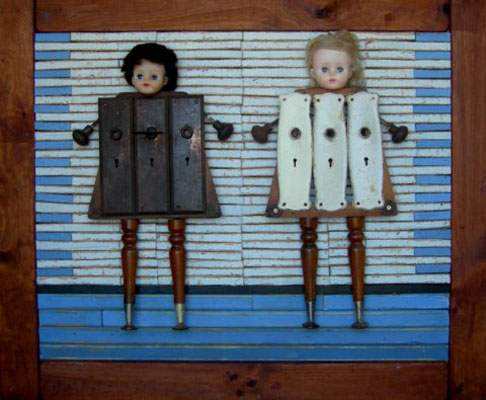Susan O’Doherty: Perfect Woman
Investigated in this show is the ‘perfect woman’ as a construct, both psychically and as an assemblage. Out of dissected dolls, furnishings, often-strange appliances and household products from the ’40s, ’50s and ’60s, O’Doherty makes mordant visual puns: a set of scales as torso in The Perfect Weight, a light-bulb as a head in Bright […]
Overview
Investigated in this show is the 'perfect woman' as a construct, both psychically and as an assemblage. Out of dissected dolls, furnishings, often-strange appliances and household products from the '40s, '50s and '60s, O'Doherty makes mordant visual puns: a set of scales as torso in The Perfect Weight, a light-bulb as a head in Bright Spark and the fairly self-evident Baby Machine.
Such caustic obviousness is applied not so much to ideas of femininity generally, but to self-evaluation in relation to other women; in Roses and The Male Gaze bouquets of skewered Barbie heads represent a sense of rivalry and interchangeability as a basis for social relationships. Medical home remedies in the open cabinet-torso of Mother's Little Helper and cosmetics filling the equivalent shelves in Glory Box suggest that family life trains girls to view maturing as a sickness.
Wear and tear on the figures, and flaking peach, teal and cream in the roughened but well-fitted wood-panel backdrops speak of exposure, but this critique is an 'inside job', domestic and anatomical. There is sympathetic irony as well as cruel absurdity to its literalisations.





